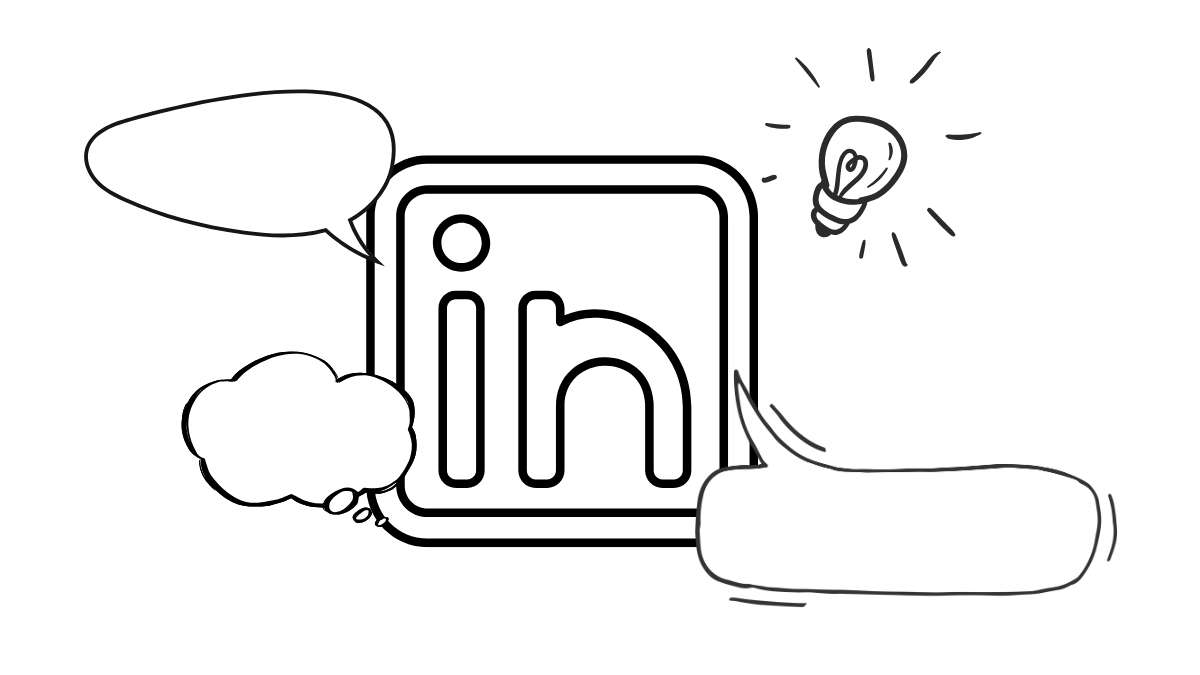A few years ago, I read Stolen Focus by Johann Hari, a study on how social media platforms prey on our attention and ruin our ability to focus. It resonated with my personal experience on these platforms and left me with a scientifically backed distaste for passive entertainment. As Hari emphasizes in his book, “the medium is the message” rings true with social media. The platform you use to consume information shapes how that information is delivered—and, in turn, how it impacts you. On social platforms, this means that the way content is designed and presented influences how you think, react, and interact.
This is why I’m taking a deep dive into LinkedIn. Unlike Instagram and Facebook, LinkedIn creates a culture in which success is determined by professional achievements and merit, not your ability to entertain others. As someone who enjoys intellectual discussion, I see LinkedIn as an opportunity for meaningful conversations.
Side-effects of shallow content
The stark differences between LinkedIn and Instagram become immediately clear when you sign up for each platform. While Instagram is designed for quick, visually oriented engagement, LinkedIn emphasizes professional networking and long-form content. For example, LinkedIn’s bio section allows up to 3,000 characters, encouraging longer content that provides value by explaining who you are and what you do. In contrast, Instagram’s bio is limited to 150 characters, promoting short, snappy content that focuses on instant appeal rather than depth.
This has been my main experience on Instagram, especially when I observe what happens in the comments section as an extension of this culture. Instagram rewards clap-back comments as its main form of engagement. These comments tend to be short, pointed statements made to provoke negative emotions. Everyday conversations on the platform are shaped by this medium, just as Hari warned us.
Distorted perceptions of success
This cultural difference between the platforms has fundamental implications for how we define success. For instance, success on Instagram is measured by likes and follows, which directly influences how people share things about themselves. They create a polished version of themselves to highlight on their socials, aiming to be perceived as more beautiful or more perfect than others.
On the other hand, LinkedIn success is measured by endorsements from people in your industry for your work and merit—not your looks or what car you drive. In fact, studies have found that the way people portray themselves on LinkedIn is more consistent with their real-life skills compared to other platforms like Instagram or Facebook, which thrive on narcissistic content. Another study even linked LinkedIn’s culture to higher career progression.
Unlike more superficial platforms, LinkedIn encourages professional growth by promoting discussions that focus on skills and expertise rather than self-promotion or appearance. It’s a space where engagement is driven by sharing knowledge and building relationships within your industry.
Final thoughts
A few weeks ago, I never gave LinkedIn much thought—it seemed like a sterile space, dominated by people trying to impress with their polished professional personas and lofty office views.
Now, out of all social media, I believe LinkedIn has the best chance to help me learn and connect with others in an environment that encourages in-depth, thoughtful discussion. It’s my rebellion against our current social environment and a call for more thoughtful, focus-driven platforms that don’t fragment our attention.
We shouldn’t have to compromise our focus for the sake of success.
So, if you’re looking for a space to engage in thoughtful, meaningful discussions and connect with others on a deeper level, I encourage you to explore LinkedIn as well.
